
Lorna and I spent 15 days in Ireland, dining out every night. We learned a few things that you might want to know if you are planning a vacation to Ireland.
To dispense with old stereotypes, there is plenty of good food in Ireland, including many excellent preparations of traditional old dishes. We never did see corned beef and cabbage on the menu, or any corned beef at all, for that matter. There is mediocre food to be found, of course, but if you plan ahead, you can do very well indeed.
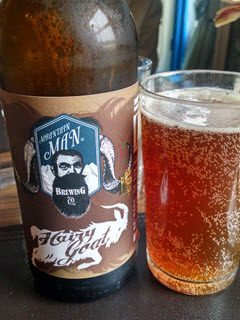
Guinness is everywhere, of course, and they have a new hoppy lager offering called Hop House 13. It is not clearly marked on the tap handles as a Guinness product, so you may think that you are giving support to the local craft beer scene when you're actually supporting their common rival!
Beyond that, though, there is a thriving craft beer culture. In every part of Ireland we found local offerings. The Irish craft beer scene is not as established as the US craft beer scene, and it has to work extra hard against that constant Guinness headwind, but with some research you can find some exciting new Irish brews. Perhaps if American tourists get into the habit of asking for something other than Guinness, some restaurants and pubs will open new taps for the local products.
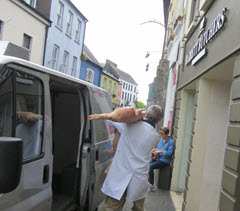
You cannot rely on Yelp! as many Irish restaurateurs know nothing of it. TripAdvisor is very well used in Ireland for restaurants as well as for lodging and attractions, so that's a great place to do some research. I reviewed all of our restaurant meals on TripAdvisor as the Foodie Pilgrim.
Many restaurants are closed on Mondays, and some on Sundays as well. In addition, many close for a period between lunch and dinner, so if you are late back from an extended exploration, you may be hungry for a few more hours. Strangely, the convenience stores do not sell nuts, so your low-carb options are very limited.
Among the wide variety of restaurants there are two common classes that you should know about: the Carvery and the Chippy.
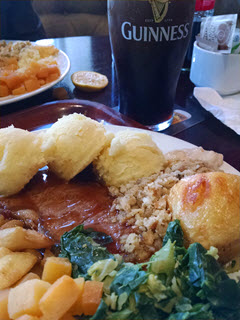
A carvery is an old-fashioned dinner set up a lot like an American catered wedding dinner with a carving station: you get a tray, a carver asks what you'd like, and then you get a plate filled with meat, potatoes, brown gravy, and vegetables.
We had been pretty distracted by all the excellent seafood, but we finally sampled a carvery lunch at a well-regarded hotel in Bailieborough, Co. Cavan. I was served meat, vegetables, and no fewer than three different kinds of potatoes! This, in the village that produced my grandmother, was as close as I saw to her style of cooking, which is to say old-school meat-and-potatoes-and-brown-gravy with overcooked vegetables!
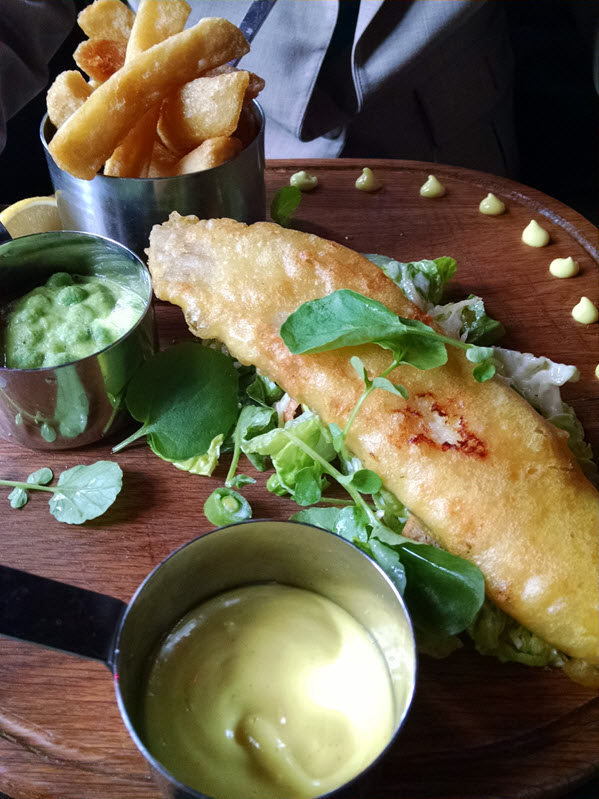
The chippy is a traditional fish-and-chips place, akin to a New England clam shack, without the clams. Indeed, in all of Ireland we never saw steamers or fried clams on the menu and fried seafood other than the fish in fish and chips seems to be unknown. Irish fish and chips is invariably of the beer-battered variety, but the versions that I had were much lighter than their American and Canadian counterparts.
Mussels are common, but clams are almost unheard-of, no steamers, no fried clams. I spoke about it to the manager of a supermarket fish counter on Achill Island, and he told me that a few times a year he orders a batch of clams for Spanish tourists, but the locals don't eat them.
North American lobster is sometimes available, but it is not common and it is very expensive. We did not see the Mediterranean spiny lobster at all.
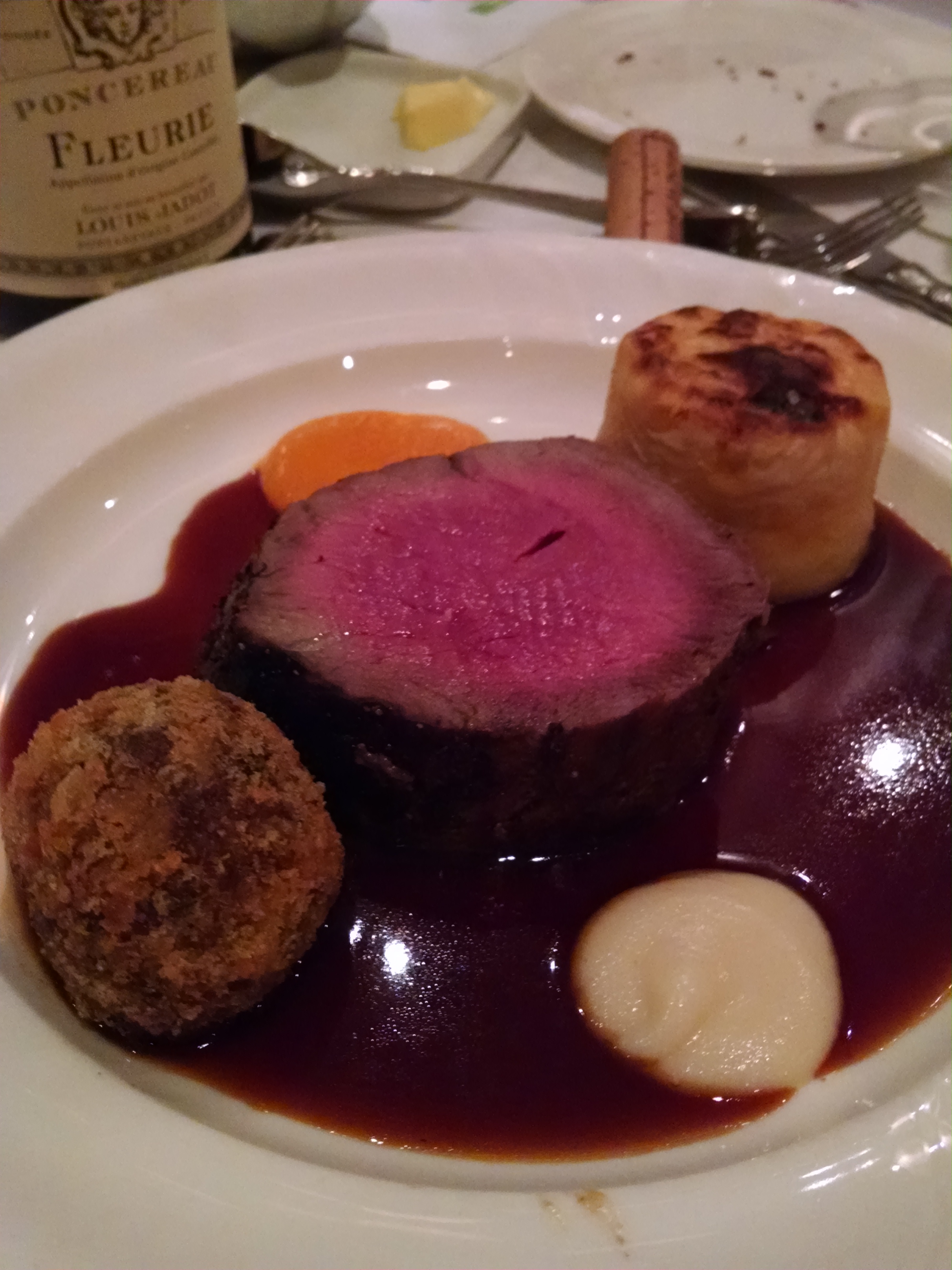
There's a thriving locavore scene, with many good restaurants listing their suppliers by name and boat, and trying to get as much as they can within a 50-mile radius. We had three of the best fish dinners of our lives at The Fish Kitchen in Bantry, at The Skipper on the Dingle Peninsula, and at Tosnu in Galway.
We also enjoyed the annual Banquet at the Westport Food Festival, where local chefs competed over four courses to create a truly memorable dinner!
Ireland has long been known for beef, and it's not all dominated by the Black Angus breed. You might get Hereford (my favorite) or even the old Black Dexter breed, but more likely you won't know the breed - on the other hand it is likely very local. I had an excellent steak at The Ivory in Belfast, from an abbey just a few miles away.
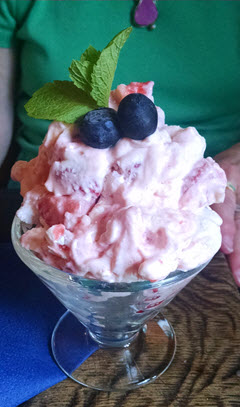
Ireland has long been known for desserts. One of the most common that we saw was variations on the Eton Mess or the Pavlova: broken-up meringue and cream with fresh strawberries. In Galway, we got a wonderful variation in a flakey vol-au-vent pastry at Tosnu.
We saw a few creme caramel/flan desserts, but not every place had a "Creme Brulee du Jour" like we see so often in the USA. They also were free from the American idea that every menu must have a flourless choco-bomb and that every dessert must have some chocolate. There was chocolate to be sure, but there are also many desserts that had none. Fresh local berries and fresh local cream were much more common than chocolate.
Coke, not Pepsi. Everywhere.
Coffee can be a challenge if you are a coffee snob - see Coffee in Ireland.
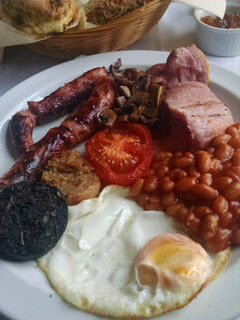
The Full Irish Breakfast is a wonderful thing, but there is more to breakfast than that. Smoked salmon was common, as was Irish Pancakes. In Waterford you can get a Bla, a plain very fresh soft square roll, and in other parts of the west you might find a Bap, which is just a common sandwich roll. An interesting local fashion is that scrambled eggs are often served unmolded from a cup.
The Irish take allergies very seriously. Most menus included a list of allegens, some of them specifying 14 different allergens, some with up to seven subgroups! They watch for cereals, celery, crustaceans, dairy, eggs, fish, lupin, mollusks, mustard, nuts, peanuts, sesame seeds, soy, and sulphur dioxide!
Irish servers actually get paid a living wage, so tipping is not expected and it can get downright confusing because they do not have the sophisticated schemes for tip-pooling that American restaurants have been forced to develop.
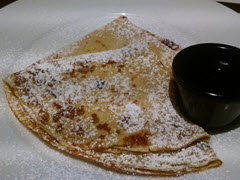
In the end, I must say that we had many excellent dining experiences in Ireland, but that was due in some part to careful planning. The worst meal we had was at Gilbert's in Cobh on a Monday night when few restaurants were open. Lorna was served fish that was so old I could smell it from across the table. Another mediocre dinner was at a restaurant way, way out on the edge of civilization where there just isn't a lot of competition. Those were the exceptions; better planning might have avoided those disappointments. We were so happy with the quality of the food overall that a few bad apples did not spoil the memories of excellent dining in Ireland!

Comments